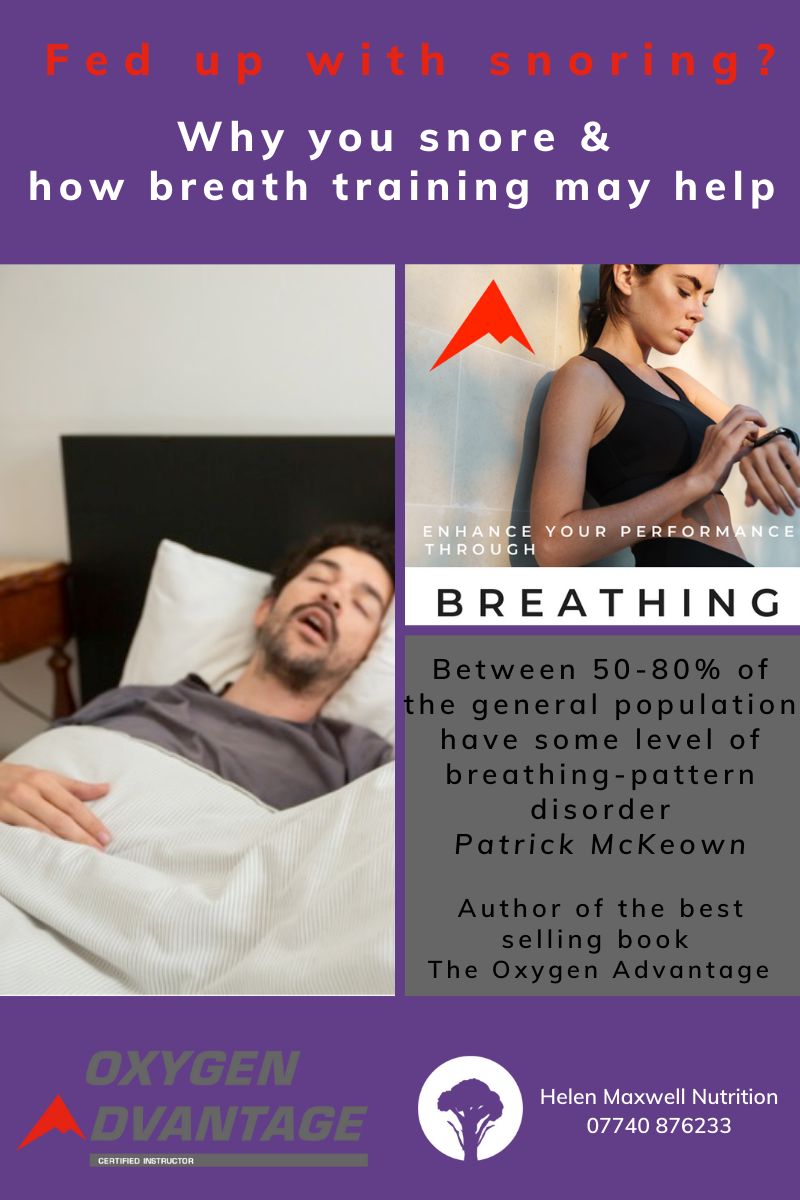
Nighttime snoring can range from being a mild embarrassment and nuisance to a more serious chronic problem. It can sometimes be a potential indicator of more serious health issues such as obstructive sleep apnea (OSA). There are essentially two reasons snoring can happen, either breathing is too forceful or the upper airway is too narrow.
During sleep the tissues of the throat relax which can partially block the airway. This tissue vibrates as air flows past it and it is this vibration and turbulence in the airway which leads to snoring. The more this airway narrows the more forceful the airflow becomes increasing vibration and therefore the snoring volume. There are two types of snoring mouth snoring and nasal snoring.
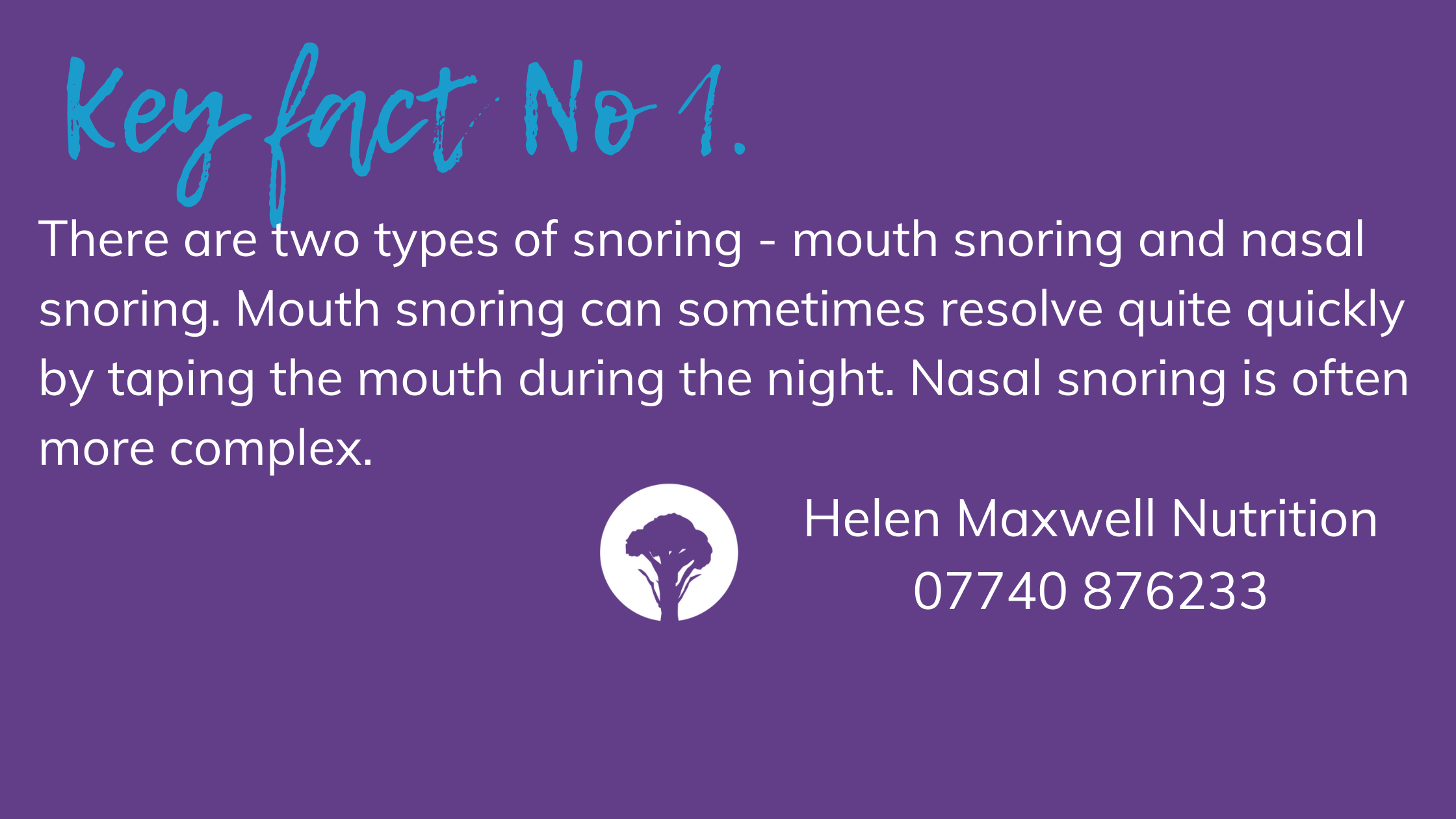
If you wake with a dry mouth then you are probably mouth breathing during the night and this won’t refresh you properly. If you mouth breath during the day you will build neural pathways regarding this behaviour pattern which will continue during sleep. This can often be a habitual pattern rather than an anatomical requirement especially where children are concerned. To re-establish full-time nasal breathing Patrick McKeown founder of The Oxygen Advantage breathing programme and author of the book by the same name recommends using lip tape. You can use any tape suitable for skin contact such as Mircropore but if the idea of covering your mouth with tape is stressful you can use MYOTAPE. This tape uses elastic tension to bring the lips together without covering the lips completely. You can purchase this tape here https://myotape.com. It may seem rather alien but a new 2020 study revealed that even full-time mouth breathers could often lip-tape providing there wasn’t any nasal obstruction. They also concluded that in children full-time nasal breathing is critical for craniofacial and airway development.
If you are nasal breathing during sleep but still snoring then this can be due to a number of different reasons summarised below.
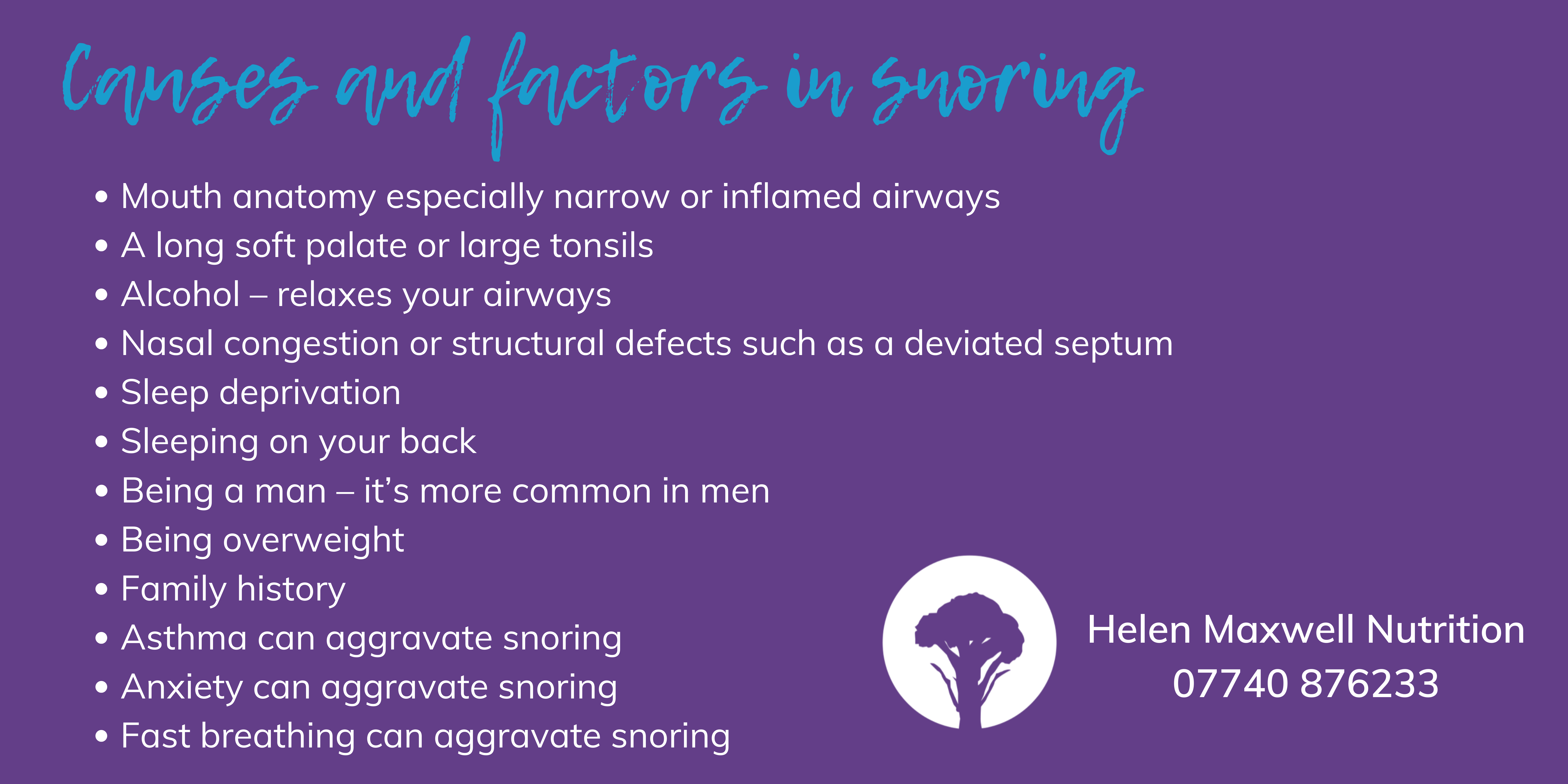
Conventional treatments such as nasal dilators are usually designed to increase space in the upper airway. What these don’t do is address any fast or hard breathing patterns which may also be contributing to the problem. Imagine sucking air through a straw. If you do this slowly and gently the air will pass through but if you breathe in fast the sides of the straw will stick together cutting off the air supply. Depending on which factors are relevant the Oxygen Advantage Breathing © programme may be able to improve or help to alleviate symptoms.
The way we breathe during the day affects the way we breathe at night which affects how we sleep and whether or not we snore. The lower and upper airways are mechanically connected. Diaphragmatic breathing tones and opens the throat area minimising the risk of collapse to cause snoring. The exercises I teach look to reset the day to day breathing pattern. When we breathe light and well during the day we can also breathe light during the night.

The breathing exercises correct dysfunctional breathing patterns and help to:
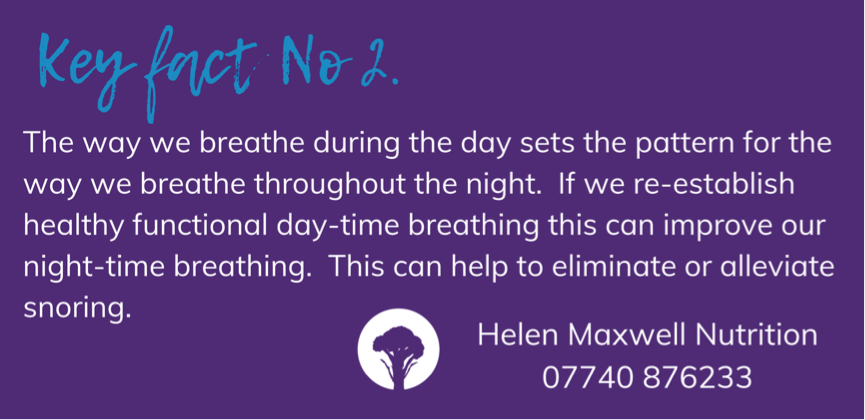
There is a lot of crossover between snoring and insomnia. Insomnia affects between 25 and 30% of the general population and for about 10% this is a chronic complaint requiring medical help. Insomnia is linked to many health complaints such as hyper arousal of the autonomic nervous system (ANS), stress, irritability, daytime fatigue, anxiety, emotional dysregulation, difficulty concentrating, depression and even high blood pressure.
If OSA is present or if chronic snoring progresses to OSA this can lead to more serious health consequences. If you suspect OSA you should consult your GP who will probably recommend a sleep study to identify if OSA is present and if so which type.
For help with any of these issues or if you have any questions regarding the Oxygen Advantage breathing programme please get in touch today. I may be teaching or consulting but will return your call as soon as possible. I always do my best to fit clients in if they are ready to invest in their health.
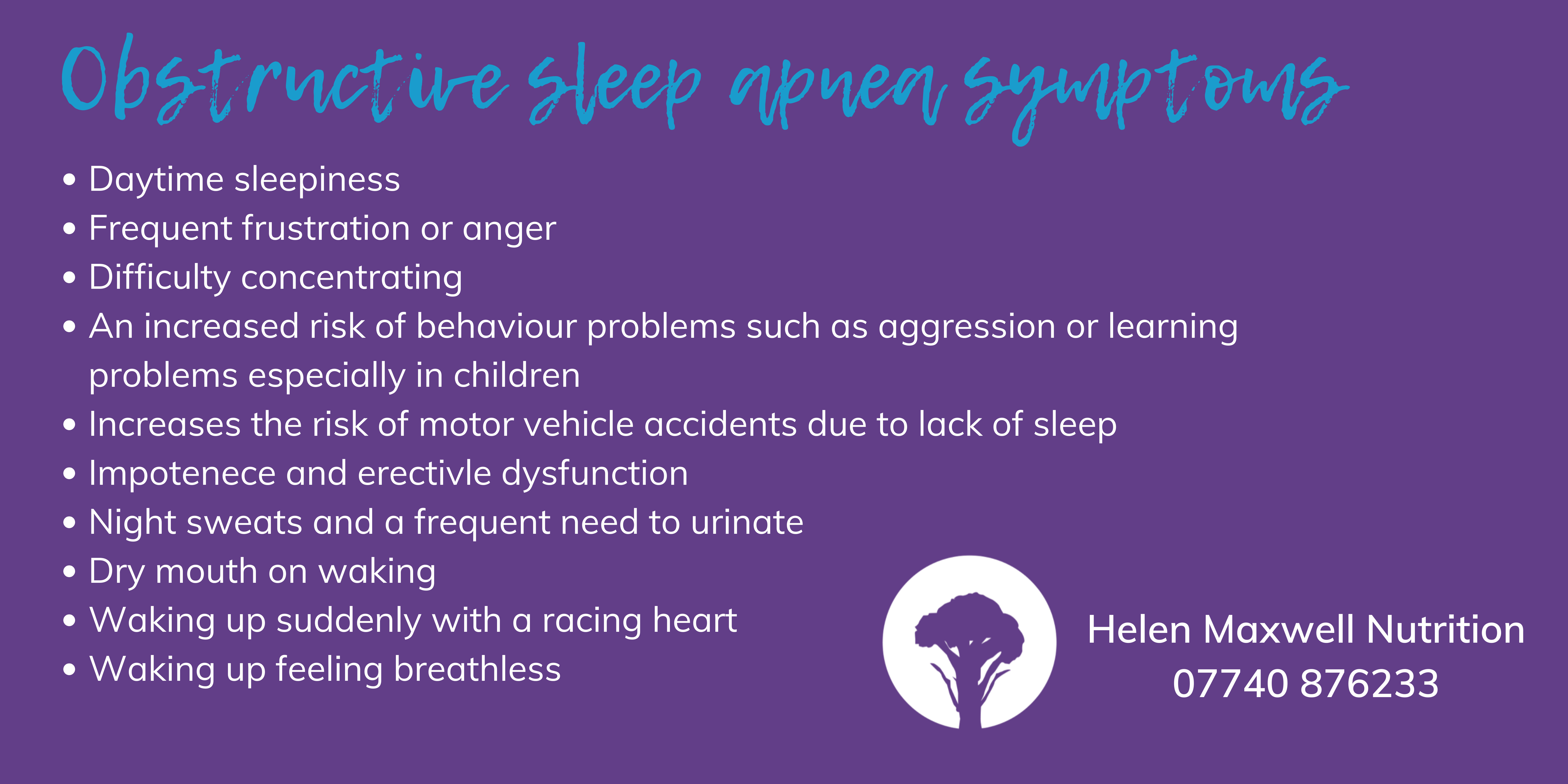
For help with any of these issues or if you have any questions regarding the Oxygen Advantage breathing programme please get in touch today. I may be teaching or consulting but will return your call as soon as possible. I always do my best to fit clients in if they are ready to invest in their health.

McKeown, P. (2015) The Oxygen Advantage; Harper Collins, New York.
McKeown, P. (2021) The Breathing Cure; Amazon, GB.
Zaghi, et al. (2020) Assessment of nasal breathing using lip taping, a simple and effective screening tool; International Journal of Otorhinolaryngology; 6(1), 10.




